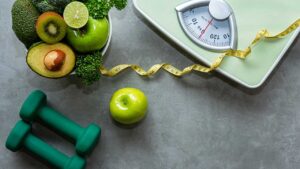By Emily Rhodes, MPH, RD, Food and Nutrition Writer, eSavvyHealth
In the interests of full disclosure, I must confess I’m a coffee lover and had to practice some serious self-control to write about the health of coffee without injecting a little confirmation bias. I mean, it is a bean, after all.
Coffee is the number one source of antioxidants for Americans and is a source of B vitamins, potassium and riboflavin. There are more than 1,000 known chemical compounds found in coffee, categorized as acids, alkaloids, alcohols, amines, esters, ketones, organosulfur compounds, phenols, and triglycerides.
Experts at Johns Hopkins University School of Medicine state that the antioxidants and the bioactive compounds in regular coffee may reduce internal inflammation and protect against disease. Consumption of coffee has been consistently associated with a reduced risk of several chronic diseases.1 Research shows that drinkers of regular coffee have these characteristics:
- Live longer
- Process glucose better
- Healthier livers
- Stronger DNA (that is, strands of DNA are less likely to break)
- Less likely to develop colon cancer, dementia, and heart failure
- Lower risk of stroke
On the other hand, regular coffee consumption does pose one obvious risk—caffeine can interfere with healthy sleep patterns, amongst other things. Personally, I’ve never been much for decaf, but it does seem to be a solution for the conundrum of wanting to work in the afternoon at the coffee shop with a cup of joe next to my laptop without sacrificing my sleep. However, I have heard claims that the way the caffeine is extracted from the bean may introduce unwanted chemicals. I drink organic coffee to avoid throwing back hot unwanted chemicals daily, and decaf seemed to be a mystery liquid that may impede my goal of “clean” (for lack of better word) coffee drinking.
So I decided to look into exactly how the caffeine is removed from coffee. To understand this, let’s start with what happens in the normal process of producing roasted coffee beans.
Coffee plants bear fruit called the coffee cherry. Once the cherries are ripe, processing must begin as quickly as possible to prevent spoilage. The dry method includes laying the cherries out and drying them until the moisture level reaches 11%. The wet method first removes the pulp from the cherry, so the bean (actually the seed of the fruit) is dried with only a thin layer left. Then the beans are separated and passed through water channels with the lighter beans floating to the top and the ripe beans sinking to the bottom. They are then placed in water-filled fermentation tanks for about 12-48 hours, causing the additional layers of pulp to dissolve. Once fermentation is completed, they are ready for drying to reach that 11% moisture level.
The beans are milled and sometimes polished to remove the outer layer. The milled beans, now called green coffee, are then roasted. Roasting transforms the green beans into aromatic brown beans, and upon reaching 400 degrees Fahrenheit, emit the lovely fragrant oil called caffeol. The process of heating in the absence of oxygen, called pyrolysis, produces the flavor and aroma of the coffee we all know and love (the scent alone has been shown to have energizing effects on the brain). The beans are then cooled by air or water, and ready for taste testing, grinding and brewing.
Now let’s talk about that cup of decaf. An average 8 oz brewed cup of regular coffee contains about 95 mg of caffeine, but some types of coffee can have much more caffeine. The FDA requires that 97% of caffeine be removed to qualify for the decaf label, leaving 3-12 mg of caffeine per cup—likely not enough to impact most people.
The caffeine is removed while the beans are still green before roasting. While there are several methods of decaffeinating coffee, the most common involve chemicals, usually ethyl acetate or methylene chloride (methylene chloride is commonly used in industrial applications like in adhesives, paints, and pharmaceuticals). In 1999 the FDA concluded that trace amounts do not affect the health of consumers, and limits those amounts in decaf coffee to no more than 10 parts per million, or one-thousandth of 1%.
Here’s how the caffeine is removed, both with chemicals and without:
- Chemical: In the direct method, the beans are steamed and rinsed repeatedly with a chemical solvent that removes the caffeine. For the indirect method, the chemicals never touch the beans. The beans are soaked for hours in water and removed. The bean water is then treated with chemicals to remove the caffeine, the beans are then re-introduced to the solution, allowing them to reabsorb the oils and flavors. For both methods, the solvents are rinsed and/or evaporate from the green beans during roasting, leaving trace amounts that are deemed by the FDA to be safe for consumption.
- Chemical-Free: The most common chemical-free alternative, often used for organic decaf coffee, is called the Swiss Water Process. First, green coffee beans are placed in hot water to extract caffeine and other compounds. Those beans are discarded, and the flavorful water, called green coffee extract, is passed through a carbon filter to remove the large caffeine molecules. A new batch of green coffee beans are then soaked in that solution, drawing caffeine out of those beans while (at least in theory) all the other compounds, including precious flavorful agents, remain.
Another method uses carbon dioxide (CO2) at high temperature and pressure (described as “supercritical” because it acts like both a gas and liquid). The beans are soaked in water to open the pores and then exposed to CO2 for several hours. This gives the CO2 time to reach into the nooks and crannies of the beans and absorb the caffeine. The caffeinated CO2 is then removed, leaving the decaffeinated coffee beans with (again theoretically) the flavor profile still intact.
Advocates of these methods claim that they remove only the caffeine. In my opinion, that’s a matter best left to the taste buds of the coffee drinker, because it is quite difficult to remove caffeine without also taking out at least some of the numerous other chemicals that impart flavor and potential health benefits. Additionally, decaffeinated beans are also more difficult to roast.
Considering that the health benefits of regular coffee are associated with multiple compounds that may be lost during the decaffeination process, do those health benefits translate to decaf? Here’s what the studies show:
- Decaf reduces fasting blood glucose levels (1)
- Both regular and decaf coffee are associated with reduced diabetes risk (2) (3)
- Systematic reviews show that moderate coffee consumption with or without caffeine reduce all-cause mortality in healthy individuals, which could be due to other compounds outside of caffeine (4)
Here’s the bottom line: Chemical decaffeination methods lead to trace amounts of toxins and less flavorful coffee. Sounds like a bad combo to me. So, if you want to enjoy a cup of decaf that retains flavors and beneficial compounds without added chemicals, choose brands that utilize the Swiss or CO2 method. While manufacturers aren’t required to indicate what process is used, look for optional claims such as: Solvent-free, Chemical-free, and Swiss-water method.
Opting for an organic decaf is a safe bet too. The organic seal guarantees that no pesticides or chemical solvents are used during processing.
Emily Rhodes, MPH, RD is a Registered Dietitian and Clinical Nutrition Manager at Keck Medicine of USC in Arcadia, CA. You can find her at the barn or in the grocery aisle reading a label.
References:
- https://pubmed.ncbi.nlm.nih.gov/34577880/
- https://pubmed.ncbi.nlm.nih.gov/24459154/
- https://pubmed.ncbi.nlm.nih.gov/20008687/
- https://pubmed.ncbi.nlm.nih.gov/32551832/
- https://www.ncausa.org/about-coffee/10-steps-from-seed-to-cup
- https://www.britannica.com/story/how-is-coffee-decaffeinated
- https://www.consumerreports.org/coffee/is-decaffeinated-coffee-bad-for-you/
- https://www.hsph.harvard.edu/nutritionsource/food-features/coffee/
- https://www.hopkinsmedicine.org/health/wellness-and-prevention/9-reasons-why-the-right-amount-of-coffee-is-good-for-you





